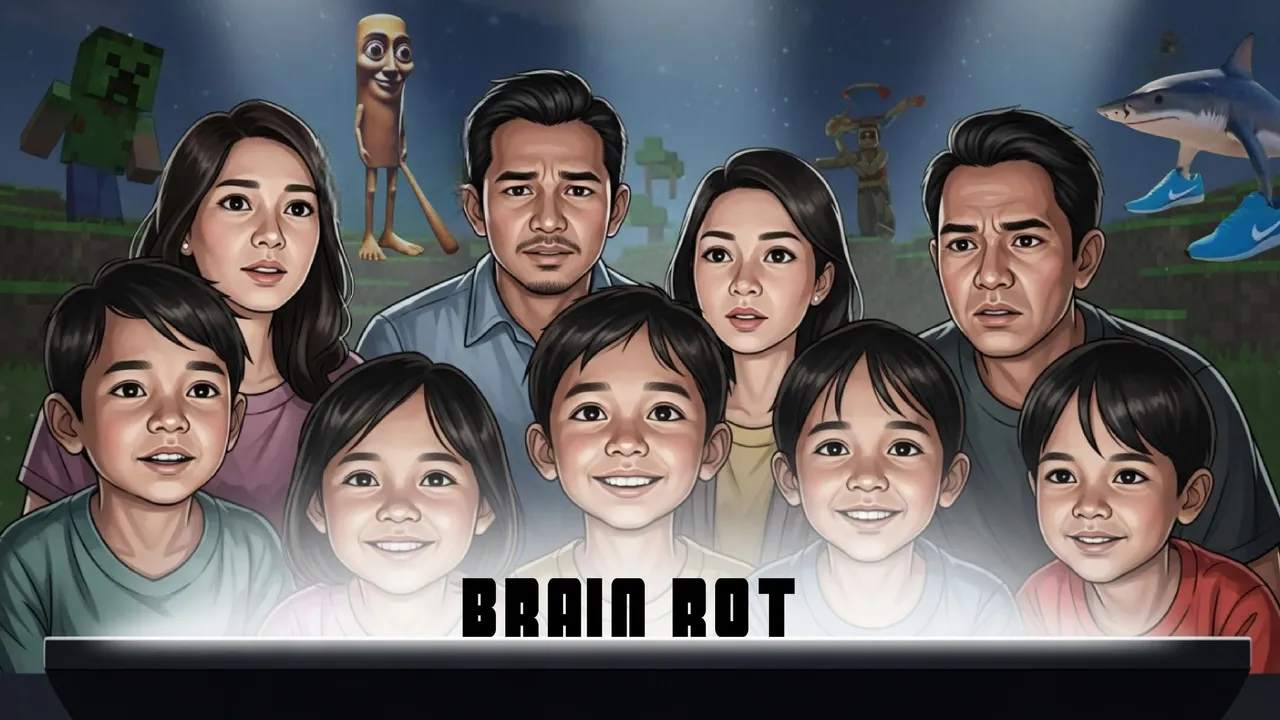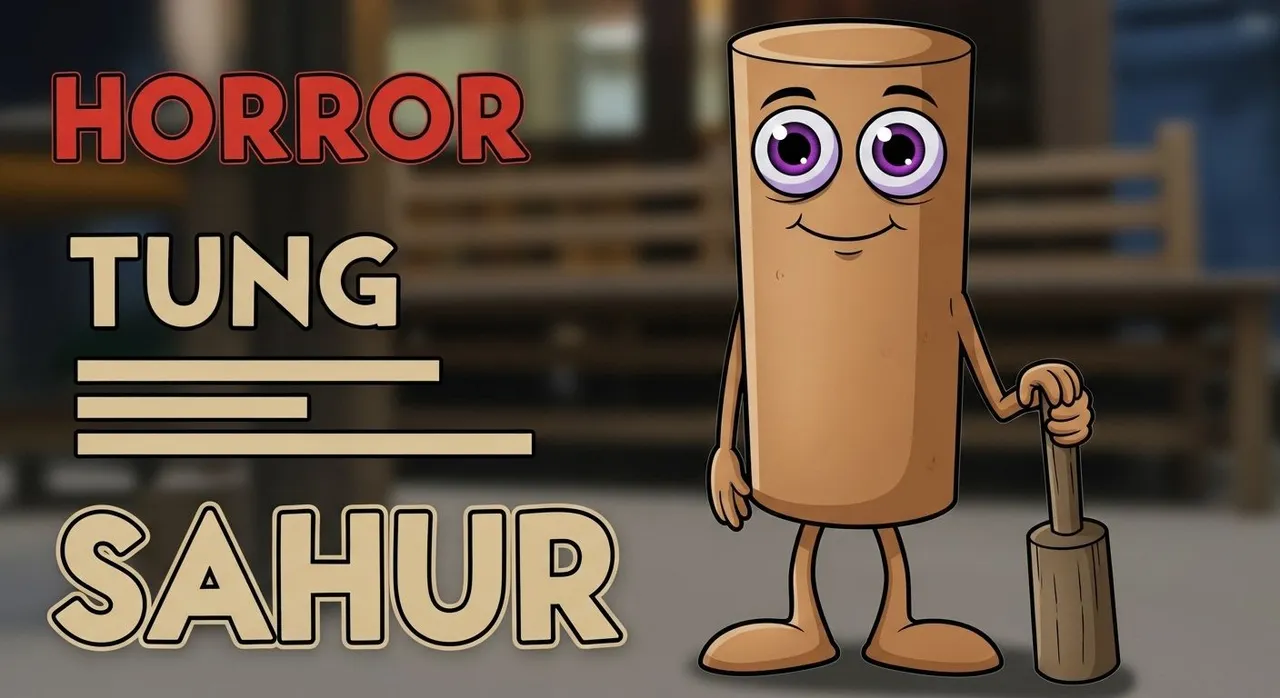A few weeks ago, I took my youngest daughter to see the Minecraft movie. She's a casual player of the game, not really familiar with its deep lore or the backstory that fuels the film's plot. Yet, based on what others who'd seen it were saying, I figured she’d find it pretty funny. The movie theater was packed with teenagers and parents with their little ones. Many times, the kids would erupt in laughter, while us parents were left scratching our heads, baffled by what they found so hilarious and we didn't.
Tus hijos son víctimas del brain roto y quizás no estás consciente de eso
Hace algunas semanas lleve a mi hija menor a ver la pelicula de Minecraft, ella es una jugadora casual del juego, no conoce la historia y todo el trasfondo que alimenta la historia de la película, pero basandome en la críticas de las personas que la han visto, me pareció que para ella sería graciosa. La sala del cine estaba llena de adolescentes, y de padres que sus pequeños hijos, y en muchas ocasiones las risas se apoderaron de los niños pero los padres quedábamos boquiabiertos con lo que para ellos era cómico y para nosotros no.

You could hear some kids trying to explain what was happening to their parents, followed by the parents' muffled replies: "Okay, I get it, but lower your voice!" It was quite an experience that left me reflecting on a broader phenomenon we’re living through today. While it might not seem directly related, I believe there's a connection. I'm talking about brain rot: what’s funny to many young people and kids today often seems meaningless and low-quality to us adults.
Se escuchaba como algunos niños trataban de explicar a sus padres lo que estaba pasando, luego escuchabas la respuesta de los padres: ¡ok entiendo pero baja la voz! Fue toda una experiencia que me dejó reflexionando sobre un fenómeno más amplio que vivimos en la actualidad y que aunque no guardan una estrecha relación, para mi si tiene que ver. Me refieron el brain rot, lo que para algunos jóvenes y niños es gracioso hoy en día, para nosotros los adultos nos parece sin sentido y de mala calidad.

For those unfamiliar with the term, "brain rot" originated on social media to describe memes and jokes that often lack any discernible sense. It's defined as a kind of intellectual decay. This term is gaining increasing relevance because it's associated with the intellectual decline of individuals who consume a lot of digital content. This concept gained even more traction in 2025 with the emergence of "Italian brain rot," with "tralalero tralala" and "tung tung sahur" being some of the most popular examples. If your child watches videos on YouTube, just ask them about these, and you might be surprised by their reaction.
Para quienes no están familiarizados con el término, el brain rot nace en la redes para referirse a memes y chistes que no parecen tener sentido, se define como podredumbre cerebral. Es un término que cobra cada vez más relevancia porque se asocia al deterioro intelectual de las personas que consumen mucho contenido digital. Esto a cobró mucha más fuerza en este 2025 con la aparición del brain rot italiano, los mas populares son tralalero tralala y tung tung sahur, si tu hijo ve video en YouTube pregúntale por esto y te sorprenderas.

While Minecraft itself isn't exactly "brain rot," its movie was clearly designed for instant gratification, relying on simple premises, repetition, or absurd situations. It even included lines that feel "iconic" and supposedly only the community understands—exactly like "brain rot" content. This all falls under what I call the aesthetics of nonsense: phrases and onomatopoeic sounds that, through sheer repetition, stick in the brain and become popular.
Aunque Minecraft no es exactamente brain rot, su película fue hecha para la gratificación instantánea, con premisas simples, repeticiones o situaciones absurdas, incluso frases que parecen "icónicas" y que supuestamente solo la comunidad entiende, exactamente como el contenido del brain rot, dentro de lo que yo llamo la estética de lo sin sentido, frases y sonidos onomatopéyicos que tras la mucha repetición se fijan al cerebro y se hacen populares.

Now more than ever, we as parents must intervene in what our children consume online. It should never feel like an excessive measure to limit screen time—whether it's TV, videos, or even series. We shouldn't be afraid of them telling us they're bored, because that very boredom will force them to be creative. We need to protect our children so they don't become part of an audience accustomed to a meme culture that normalizes laughing at what pretends to be simple and "viral," but which, in reality, is causing a deterioration in their attention span.
Hoy mas que nunca debemos intervenir como padres en lo que nuestros hijos consumen en internet, nunca debe parecer una medida exagerada quitarle la televisión, los videos, incluso las series a nuestros hijos, no hay que temerle a que nos digan que están aburridos porque eso los obligará a ser creativos. Hay que defender a los hijos para que no sean parte de una audiencia adaptada a la cultura del meme que normaliza reírse con lo que se disfraza de simple y "viral", pero que realmente les causa un deterioro en su capacidad de la atención.
Imagen made with ImageFX The prompts are below
! [prompts]
«Un grupo de niños miran con expresión risueña una pantalla brillantemente iluminada, mientras sus padres los observan con preocupación y una creciente sensación de comprensión. La escena es ligeramente surrealista, con reflejos distorsionados en la pantalla y una sutil sensación de inquietud. El estilo es una mezcla de realismo y arte digital, que enfatiza el contraste entre la mirada perdida de los niños y las expresiones preocupadas de los padres». Coloca en el fondo detrás de los padres imagenes con baja opacidad de Minecraft, tralalero tralala y tung tung sahur
A cartoon illustration shows a shark with legs wearing blue sneakers standing on a tan sandy beach next to a palm tree. The shark has a dark grey back and a lighter grey underside, a large eye with a black pupil and white sclera, and an open mouth revealing white teeth and a pink interior. Its pectoral fins are replaced by two legs, each wearing a bright blue sneaker with a white swoosh and a chunky white sole. The shark's dorsal and tail fins are present. Behind the shark is a bright turquoise ocean with stylized white wave lines near the shore, extending to a sunny light blue sky with a few white clouds. To the right of the shark is a tall palm tree with a brown trunk and green fronds. Overlapping the top of the shark is bubbly, light green text reading "TRALALERO" on the top and "TRALALA" on the second line. Below "TRALALA" is "DJ ARIEL" and "REMIX" in smaller white letters outlined in black. The image has a bright, cartoonish, and playful style, with a 1920x1080 aspect ratio.
A digital art image in a 1920x1080 format displays a cartoonish, cylindrical figure with a tan skin tone. The figure has a rounded top suggesting a head, featuring two large, round eyes with purple irises and black pupils. A small, curved line represents a smile, and there are no visible ears or hair. The cylindrical body extends downwards to thin, cartoonish legs ending in two large, flat feet. The figure is holding a thick, cylindrical object, possibly a club or a pestle, in its right hand, resting it on the ground.